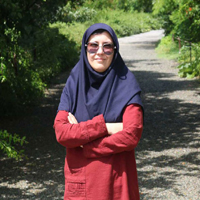Exploring chromosome numbers and evaluation of some karyotypic characteristics of selected woody species from the Hyrcanian forests
Author(s):
Article Type:
Research/Original Article (دارای رتبه معتبر)
Abstract:
Cytogenetic investigations in plant species, particularly wild and native plants, are crucial for understanding their evolutionary history, establishing species relationships, and determining karyological features. This study delves into chromosome counting and evaluation of karyotypic characteristics of five woody species belonging to three families: Ulmaceae, Cornaceae, and Rhamnaceae within the Hyrcanian Forests. Root tip meristem was used for chromosomal studies by classical methods. The results revealed that all studied species were diploid. The chromosome numbers of three species, Cornus australis (2n=2x=22), Rhamnus sintenisii (2n=2x=26), and Zelkova carpinifolia (2n=2x=28) were documented for the first time in the world. Additionally, two species of Ulmus glabra and U. minor with a chromosomal number (2n=2x=28) were reported for the first time in Iran. Concerning chromosomal length, R. sintenisii displayed the smallest chromosome length (0.9 µm), while U. glabra exhibited the largest (2.34 µm). The chromosomes in three species, R. sintenisii, U. glabra, and Z. carpinifolia were of the metacentric and sub-metacentric types. U. minor presented sub-telocentric chromosomes in addition to the mentioned types, and C. australis displayed metacentric chromosomes in two forms, M and m. Regarding symmetry, chromosomes in three species, R. sintenisii, U. minor, and Z. carpinifolia were classified as 2A, C. australis as 1A, and U. minor as 3A. Given the scarcity of similar studies on forest species, this research significantly contributes to identifying the cytogenetic characteristics of the examined species.
Keywords:
Language:
Persian
Published:
Journal of Forest and Wood Products, Volume:77 Issue: 1, 2024
Pages:
23 to 33
https://magiran.com/p2733714
مقالات دیگری از این نویسنده (گان)
-
Structure analysis of juniper (Juniperus excelsa M.B.) stands in the Irano-Touranin vegetation zone (Case study: Parvar protected area, Semnan province)
*, Khosro Sagheb Talebi, Hooman Ravanbakhsh, Morteza Moridi, Mehdi Pourhashemi, Yousef Ajani, Maryam Hasaninejad, Maedeh Fadaei Khojasteh
Journal of Forest and Wood Products, -
The Impact of High-Rise Buildings on the National Botanical Garden of Iran
Ahmad Rahmani *, Morteza Hadi Jaberi Moghadam, Ali Qomi Oili, Behnam Hamzehee, Mohammad Matinizadeh, Mostafa Khoshnevis,
Iran Nature, -
Fossil trees of Qeshlaq Coalfield; An opportunity for advancing geotourism in Eastern Alborz
Maedeh Fadaei Khojasteh *, Vahid Etemad, Mohsen Ranjbaran
Iran Nature, -
Discovery of ancient plant fossils in Washington points to paleobotanic mystery
Maede Fadaei Khojasteh *
Iran Nature,



